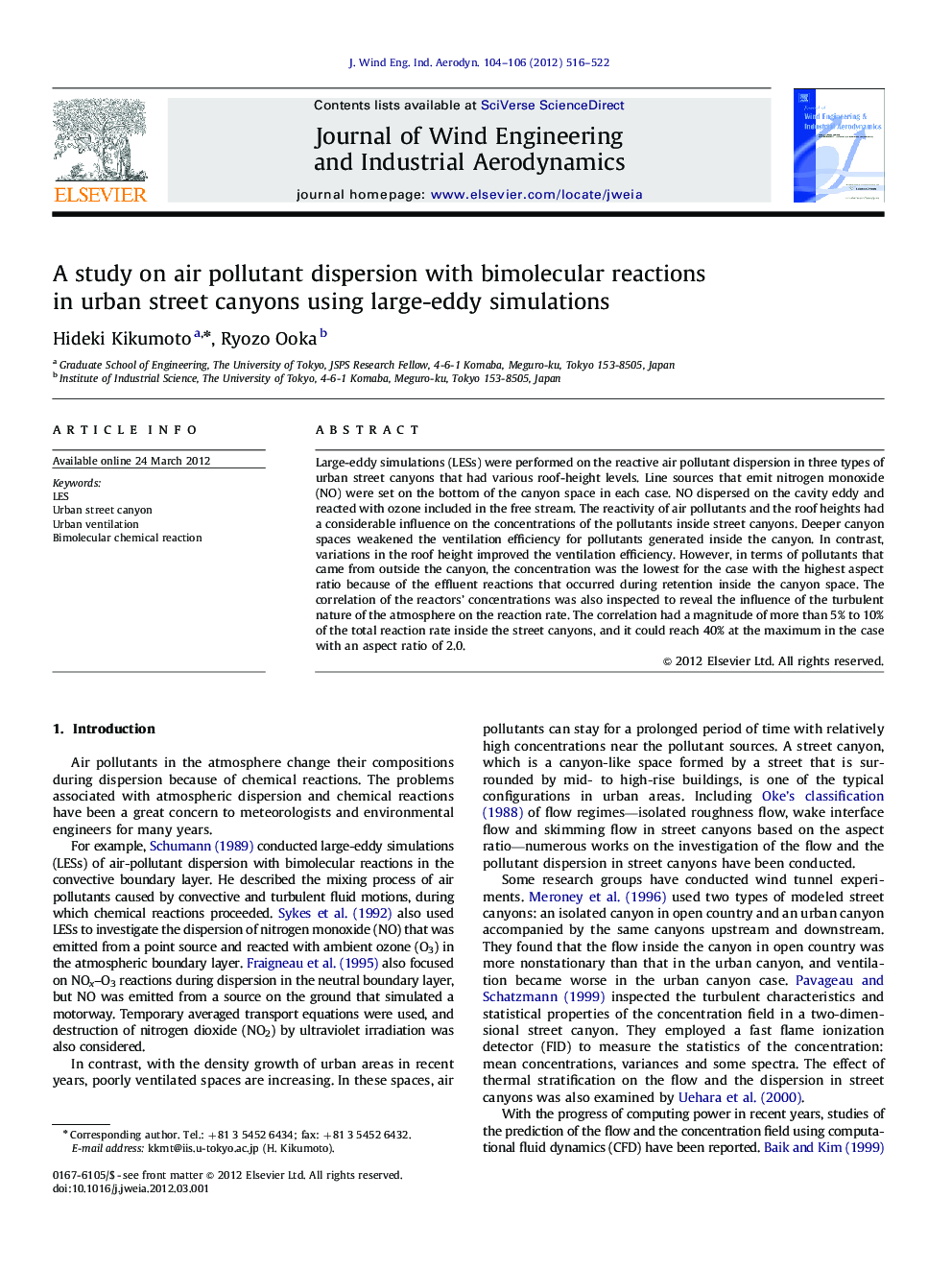| Article ID | Journal | Published Year | Pages | File Type |
|---|---|---|---|---|
| 293675 | Journal of Wind Engineering and Industrial Aerodynamics | 2012 | 7 Pages |
Large-eddy simulations (LESs) were performed on the reactive air pollutant dispersion in three types of urban street canyons that had various roof-height levels. Line sources that emit nitrogen monoxide (NO) were set on the bottom of the canyon space in each case. NO dispersed on the cavity eddy and reacted with ozone included in the free stream. The reactivity of air pollutants and the roof heights had a considerable influence on the concentrations of the pollutants inside street canyons. Deeper canyon spaces weakened the ventilation efficiency for pollutants generated inside the canyon. In contrast, variations in the roof height improved the ventilation efficiency. However, in terms of pollutants that came from outside the canyon, the concentration was the lowest for the case with the highest aspect ratio because of the effluent reactions that occurred during retention inside the canyon space. The correlation of the reactors’ concentrations was also inspected to reveal the influence of the turbulent nature of the atmosphere on the reaction rate. The correlation had a magnitude of more than 5% to 10% of the total reaction rate inside the street canyons, and it could reach 40% at the maximum in the case with an aspect ratio of 2.0.
► We model three street canyons with different roof heights. ► We examine the effect of the reactivity of pollutants on their concentrations. ► Increasing the roof height causes poor urban ventilation. ► However, it leads to lower concentrations of pollutants generated outside the canyons. ► The large dependence of the reaction rate on the turbulent fields is also inspected.
